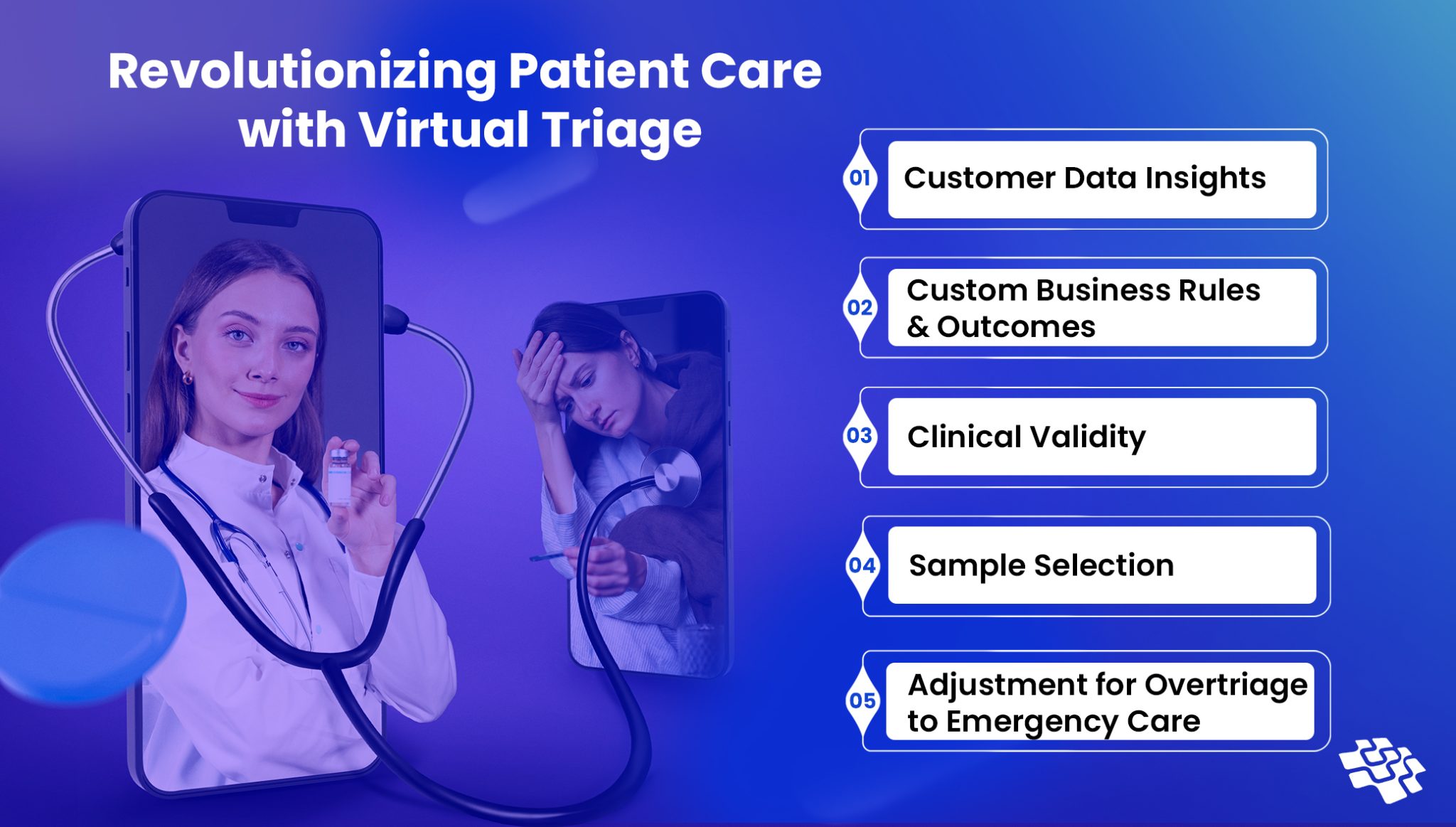How Virtual Triage Transforms Patient Care Seeking Behavior?
Patients can interact with a triage specialist or have a digital AI chat experience in a virtual exam room that is accessible from their homes because of virtual triage in custom AI mHealth app development. Once linked, a patient takes part in a virtual examination that gathers data about them and their symptoms. The following steps in their therapy are then determined by analyzing the symptoms. Advanced practitioners can provide virtual care for patients with mild symptoms. Individuals with more serious ailments can be sent straight to emergency rooms or specialists.
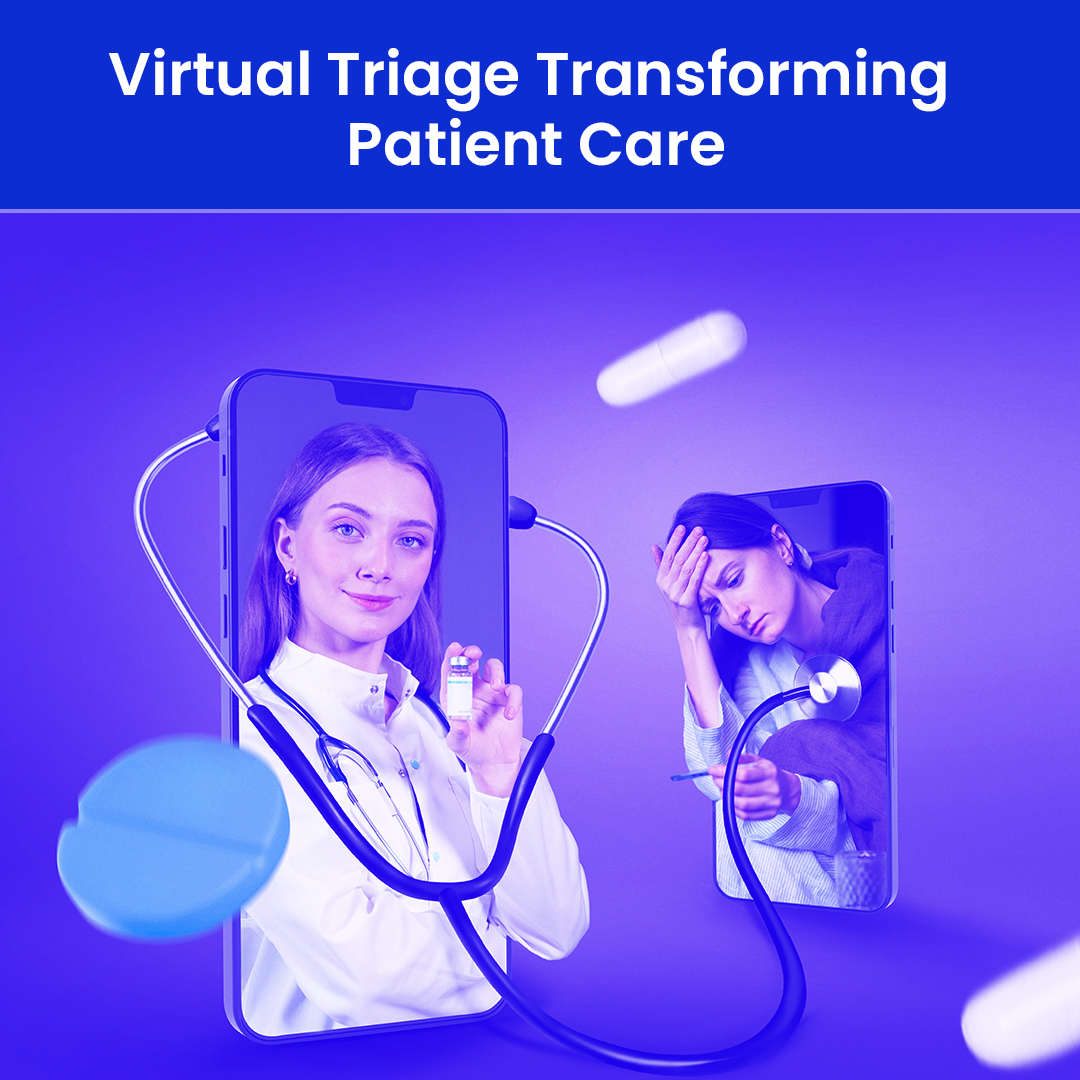
Struggling with Patient Flow Management? Leverage AI-driven Triage to Optimize Care Coordination and Resource Allocation

“VT enhances potential clinical effectiveness through early detection and referral, can reduce avoidable care delivery due to late clinical presentation, and can divert primary care needs to more clinically appropriate outpatient settings rather than high-acuity emergency departments. VT also offers an opportunity for providers to make patient health care experiences more personalized.”– NCBI
What is Virtual Triage: Overview
Virtual triage software evaluates patients’ illnesses before they visit a medical facility. This enables medical professionals to rank patients’ care based on how serious their conditions are. As a result, those in critical condition can receive urgent care in the appropriate manner.
The increasing impact of digital healthcare will soon make virtual triage programs a widespread occurrence. In 2024, the digital health market brought in $4.85 billion. With a projected 12.81% yearly growth rate between 2024 and 2029. By 2029, the market is expected to grow to a size of $8.86 billion. This demonstrates the notable change in public opinion on digital healthcare, including virtual triage.
Consequences Of Current Care-Seeking Behavior Patterns
74% of patients are unsure of the degree of care that is best for them. In this figure, 33.5% had a plan that was not clinically suitable for their illness, and 40.5% openly said that they were unsure of where to look for care. All facets of healthcare systems, which are already under tremendous strain, are adversely impacted by this ignorance among care-seekers, which increases the usage of inappropriate medical facilities:
- One of the primary issues preventing proper, timely, and effective hospital care is the overuse of the emergency room.
- In the United States, the average wait time for a doctor’s appointment is thought to be 26 days.
- Staffing shortages and ongoing stress are cited by 34% of physicians globally as contributing factors to the rise in medical errors.
Impact of Virtual Triage on Patient Behavior
Virtual triage is the process of analyzing patient symptoms using digital technologies. This aids in figuring out the patient’s best course of treatment. It can direct patients to emergency care, specialists, telemedicine, or self-care therapy recommendations. These solutions are available online at any time, from any device, and at any place. Finding healthcare information and services is made simpler as a result. Effective use of virtual triage yields impressive outcomes.
- Influence care-seeking behaviour: Following advice from virtual triage, 35% of patients modified how they sought care.
- High patient satisfaction: In the future, 80% of participants said they were or very likely to use virtual triage once more
- Increased intent toward self-care: 69.5% of users said they planned to adhere to self-care guideline.
Benefits of Virtual Triage Software
- Organized Improved Access to Patient Care: Through this approach, patients will have instant access to healthcare assessments, removing the need for in-person visits and cutting down on lengthy wait periods.
- Reduced Healthcare Costs: Healthcare expenses can be significantly decreased by AI healthcare mobile app development services for both patients and providers by avoiding unnecessary and unexpected hospital stays and admissions.
- Effective Resource Allocation: If the acuity of the cases is known ahead of time, it can help healthcare facilities allocate resources appropriately, giving priority to the most urgent situations.
Facing High ER Overcrowding? Implement Intelligent Routing to De-Escalate Non-Emergency Cases and Balance Patient Load
How Virtual Triage Transforms Patient Care?
AI healthcare mobile app development services are revolutionizing patient care by enhancing accessibility, reducing wait times, and optimizing healthcare resources. Below are five keyways it transforms care delivery, ensuring timely interventions, improved patient outcomes, and a more efficient, patient-centric healthcare system.
1. Customer Data Insights
A large health system in the South leveraged advanced patient flow management to balance supply and demand across care settings. By integrating custom routing logic, the system efficiently directed patients to the most appropriate care options, alleviating pressure on overburdened primary care and emergency departments.
- 40% decrease in demand for constrained primary care services
- 36% increase in patients accessing less-constrained urgent care locations
- 130% surge in patients utilizing virtual care for immediate needs.
These insights highlight the impact of data-driven triage in optimizing care delivery, improving patient access, and reducing strain on high-demand resources.
2. Custom Business Rules & Outcomes
A key insight from multiple studies is the transformative impact of custom business rules in patient triage. By integrating tailored routing logic based on system capacity and patient needs, healthcare providers can optimize care delivery and enhance patient outcomes.
- 97% reduction in unnecessary ER visits, preserving critical emergency resources
- Improved efficiency in directing patients to the most suitable care settings
- Consistent outcomes across different implementation methods, whether API-driven or embedded within existing systems
These results demonstrate the power of adaptive triage strategies in streamlining patient flow, reducing bottlenecks, and ensuring timely access to appropriate care.
3. Clinical Validity
AI-driven virtual triage software undergoes rigorous validation to ensure patient safety and minimize the risk of misclassification. These systems are designed to prioritize caution, often erring on the side of overtriage to emergency care rather than missing acute conditions. However, VT accuracy varies across clinical specialties, depending on the depth and specificity of disease-related data used for training.
- Validity is assessed using physician-developed clinical vignettes that simulate diverse symptomatic presentations across multiple care settings.
- Studies have shown that well-validated VT engines provide safe recommendations in most cases.
- AI-based VT systems may face challenges in detecting rare conditions or atypical symptom presentations due to limited prevalence data.
- Continuous updates to medical content models, epidemiological frameworks, and triage algorithms enhance accuracy and reliability over time.
- Research indicates that VT recommendations can influence patient decision-making, with a significant percentage of users adjusting their initial care-seeking intent based on the evaluation.
These findings underscore the importance of ongoing refinement in custom AI mHealth app development, ensuring alignment with evolving medical knowledge and improving patient outcomes.
4. Sample Selection
The selection of virtual triage cases for analysis followed a structured approach to ensure relevance and clinical significance. The criteria included:
- Emergency Classification: Cases where the top-ranked condition required emergency care.
- Probability Threshold: Conditions identified with a probability of ≥90% as the primary diagnosis.
- Prevalence: Conditions with a minimum of 300 recorded cases in the dataset.
- Severity & Mortality Risk: Conditions with a crude death rate of 1 per 100,000 or higher (based on CDC data).
Based on these criteria, five high-severity conditions were selected for evaluation: myocardial infarction (heart attack), stroke, asthma, pneumonia, and pulmonary embolism. To enhance patient understanding, medical terminology in the VT interface was adapted to more commonly recognized language.
This method ensures that VT assessments are measured against clinically significant and high-risk conditions, reinforcing the reliability of triage recommendations.
5. Adjustment for Overtriage to Emergency Care
Virtual triage technology is intentionally designed to prioritize patient safety, favoring sensitivity over specificity in care referrals. This approach ensures that patients with potentially serious conditions are not under-referred, even if it results in some overtriage to emergency care.
- Studies indicate that approximately 13% of emergency department recommendations from VT systems are over-referrals, a figure that has been decreasing as AI models evolve.
- Comparative analyses with traditional teletriage protocols show that VT systems over-refer 12% of cases to the ED, significantly lower than the 26% over-referral rate seen in widely used telephone triage systems.
- To refine estimates of patient decision-making influenced by VT recommendations, adjustments for overtriage to emergency care are applied, ensuring a more accurate assessment of care intent shifts.
These ongoing improvements in triage accuracy help strike a balance between caution and efficiency, optimizing care allocation while maintaining patient safety.
Need Seamless Telehealth Integration? Our Digital Health Software Development Services Ensure Scalable, Secure Virtual Care Platforms
The Future of Virtual Nursing
The COVID-19 pandemic hastened the development of telehealth technologies and the need to use them in new settings, like remote patient monitoring, which uses telehealth to gather patient data to influence treatment choices. Remote patient monitoring is simpler than the virtual nursing concept. As the demand for skilled nurses grows, the virtual nursing model may allow them to contribute to patient safety in direct care and through staff mentoring and collaboration.
Additionally, as with remote patient monitoring, it may support higher-quality care outside of its original setting, provided future implementation considers human factors variables that determine usability, such as meeting patient needs and selectively adapting elements of patient care that work well with communication technologies
Virtual Nursing Outcomes on Healthcare Quality and Cost
Over two and a half years, the VIC model was evaluated across patient satisfaction, quality, financial, and safety metrics. Key findings include:
- Improved Patient Experience: Top Box scores in the Hospital Consumer Assessment of Healthcare Providers and Systems (HCAHPS) report increased, with healthcare communication ratings improving by 6.2% to 17.4%.
- Cancer Detection: To identify anomalies in chest X-rays, detect early-stage tumors in mammograms, and even predict cancer subtypes by analyzing pathology slides, artificial intelligence algorithms are being deployed. These developments are essential for increasing cancer patients’ chances of survival and the effectiveness of their treatments
- Enhanced Quality Metrics: Data from the National Database of Nursing Quality Indicators showed low rates of catheter-associated urinary tract infections, pressure injuries, deep vein thrombosis, and central-line associated bloodstream infection.
- Increased Patient Safety: The VIC model helped prevent approximately 1,400 errors per quarter (“good catches”).
- Missed Nursing Care Perception: Surveys found no statistically significant difference in missed care rates, potentially due to the Hawthorne effect, where heightened awareness influenced reporting behavior.
Conclusion
Virtual triage is transforming the way patients seek and receive medical care, enhancing accessibility, efficiency, and patient outcomes. By leveraging advanced technologies, it streamlines patient evaluation, reduces wait times, and ensures timely interventions—especially in underserved areas. Despite challenges in implementation, the benefits far outweigh the obstacles, making virtual triage an essential component of modern healthcare. Its ability to optimize resource allocation, improve clinical workflows, and support cost-effective care delivery underscores its growing significance. As healthcare continues to evolve, embracing virtual triage will be key to building a more responsive, patient-centric system.
NexGen Invent’s digital health software development services empower healthcare providers with cutting-edge virtual triage software. From AI-driven patient assessments to seamless integration with existing systems, our expertise ensures scalable, efficient, and compliant digital health services. Contact us to revolutionize patient care and optimize healthcare delivery.
Frequently Asked Questions About
Related Blogs
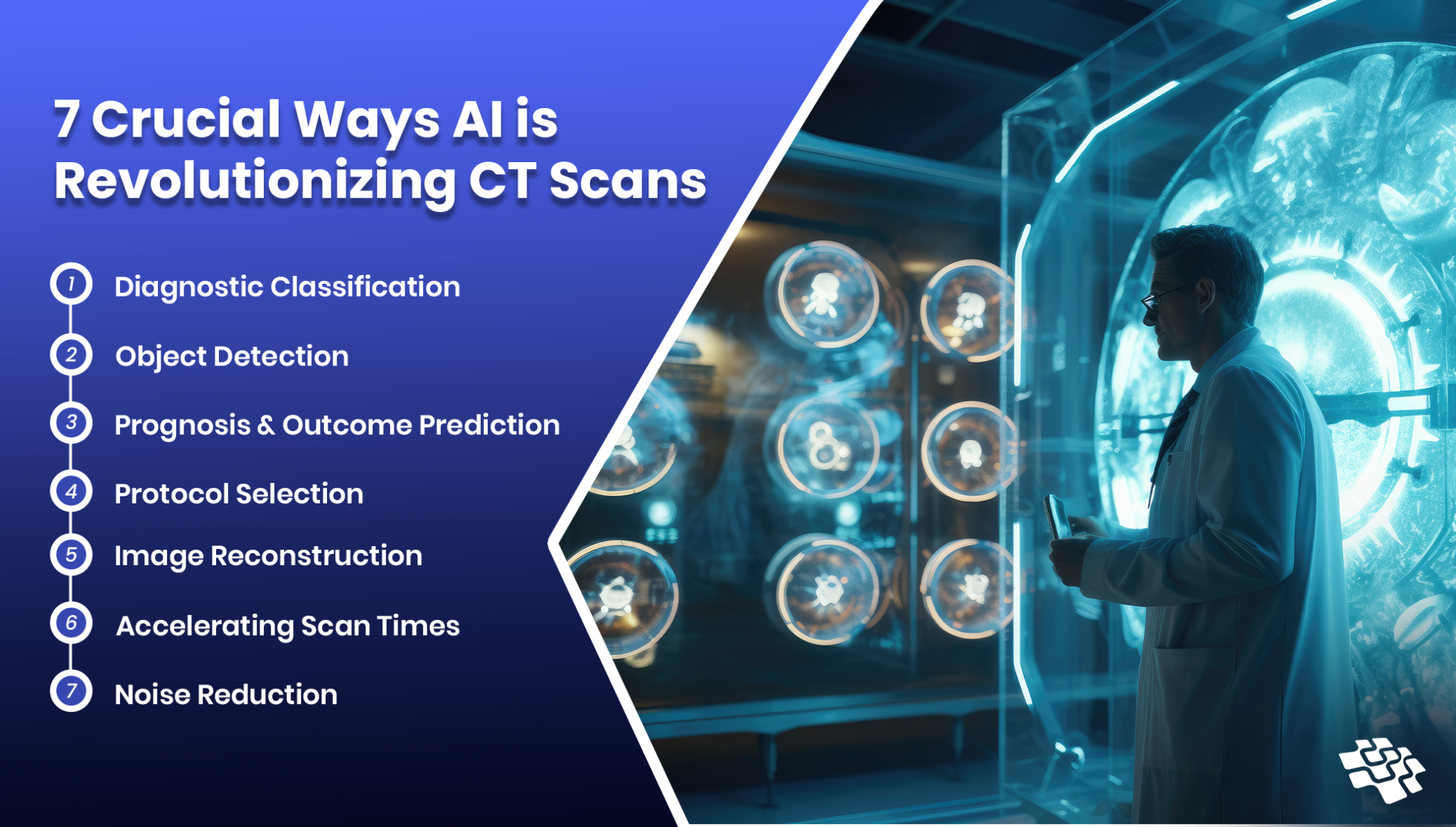
How AI is Being Used in CT Scans?
In the United States, heart disease is the primary cause of death, taking one life out of every five. Furthermore, by 2035, it is predicted that over 45% of Americans will suffer from heart disease, at a cost of more than $1 trillion. Although a lot of screening methods depend on blood measurements of parameters like cholesterol and triglyceride levels, computed tomography (CT) scans can offer a multitude of real-time data regarding cardiac function.
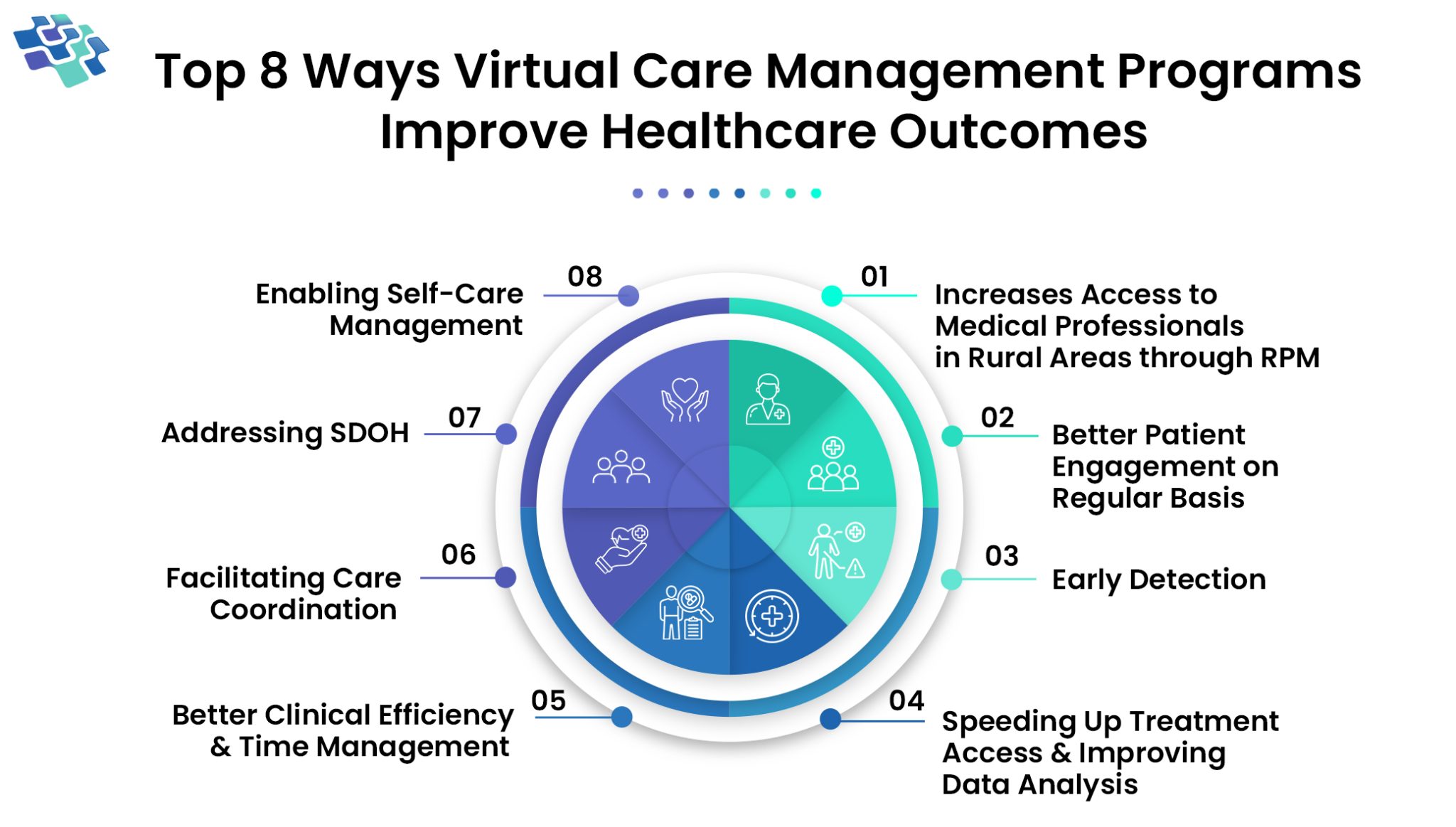
How Virtual Care Management Programs Improve Patient Wellness?
The healthcare system’s vulnerability sparked the creation of mHealth apps and medical software, and it also significantly raised the acceptance of virtual health. Virtual visits rose more than 11,000% over pre-pandemic numbers in the first several weeks of the pandemic, according to the report. Virtual health is becoming increasingly popular. It is becoming essential for identifying and treating illnesses and for assisting customers in maintaining and enhancing their well-being. Are you curious about the future of virtual health and what it entails?
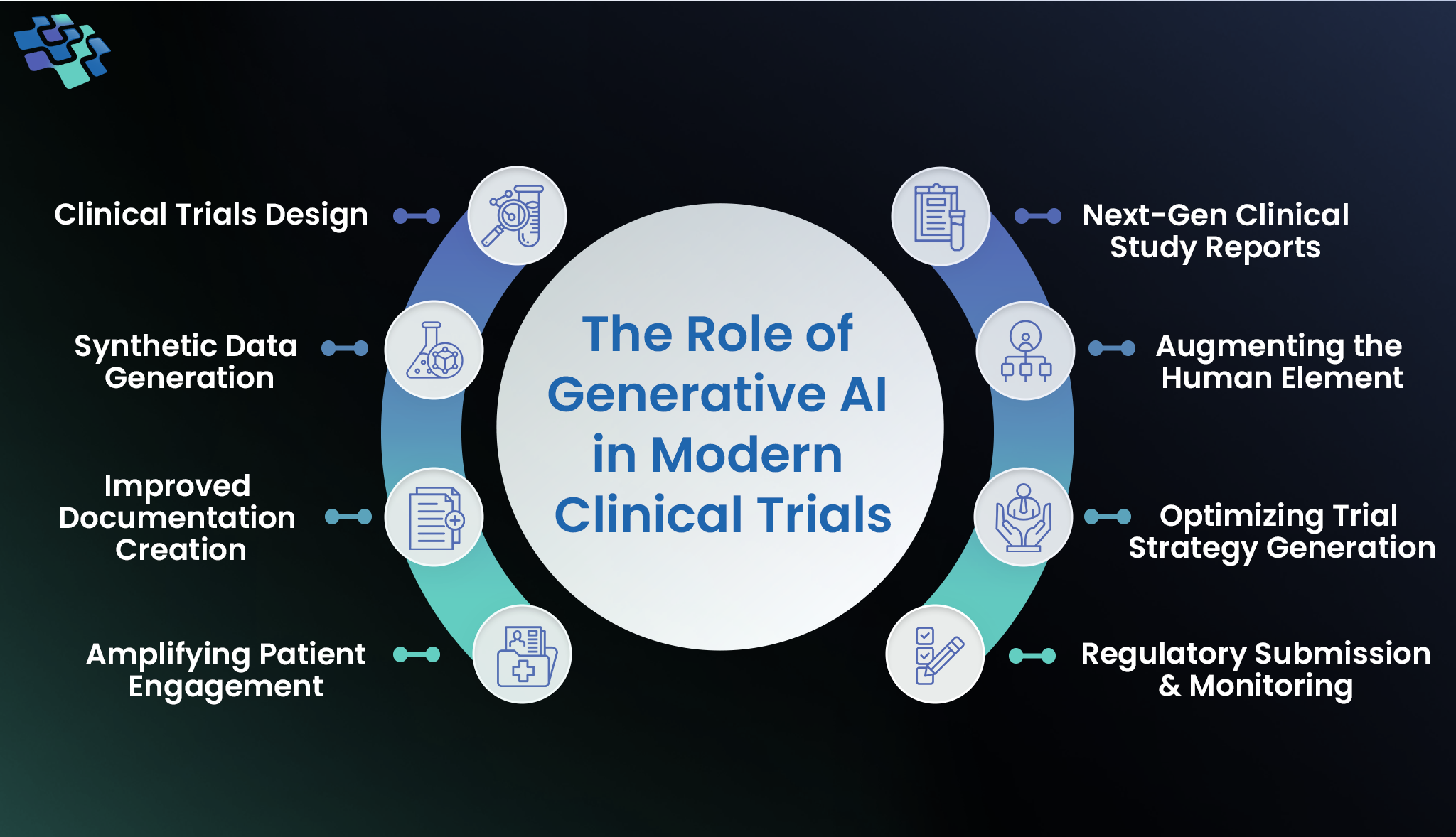
The Advancing Role of Generative AI in Clinical Trials
Generative AI in clinical trials has potential because these trials should be cost-effective, versatile, and adaptable to meet the varied objectives of different stakeholder groups. The complexities of clinical trials, which are labor-intensive, complex, and highly regulated by nature, make this more difficult in today’s challenging economic environment.
Stay In the Know
Get Latest updates and industry insights every month.
